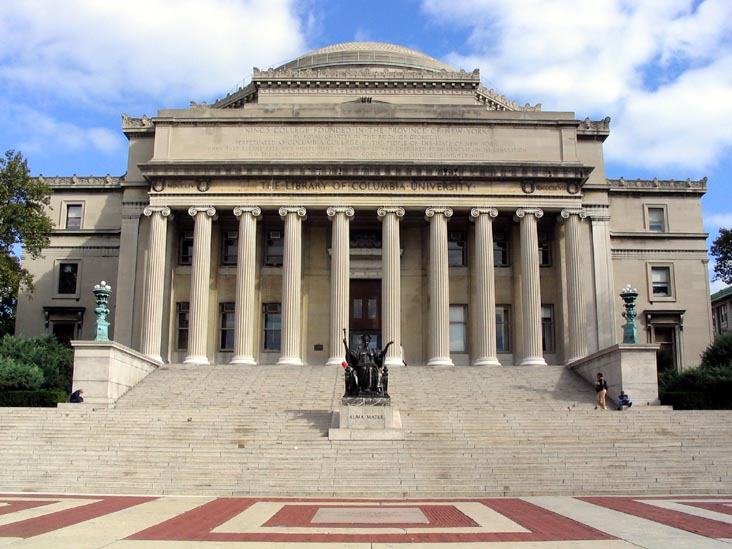Education
‘Knuckleheads, Ego-Trippers and Extremists’

On Feb. 10, 1355, students at the world’s oldest university were celebrating the feast day of Saint Scholastica in Oxford, England. Several scholars were drinking at Swindlestock Tavern when two of them demanded they be served higher-quality wine. The tavern owner, who also happened to be the mayor of Oxford at the time, responded as any insulted restaurateur might. He asked the students to leave the pub. Incensed, one student threw his wine on the owner’s face. A days-long bloody fight between University of Oxford students and the townspeople ensued, in which nearly 100 people were killed.
Town-gown relations can always blow up in any university town
This bizarre piece of history finds relevance today as college campuses across the United States find themselves roiled with pro-Palestinian demonstrations. Student protest is as old as higher education itself, and while the demands of recent centuries tend to focus more on government policies and wars and less on alcoholic beverages, the extreme demands and attitudes of the few often harm the many.
University students all over the United States are setting up outdoor encampments to protest U.S. involvement in the Israel-Hamas conflict. President Biden’s administration has remained committed to aiding its longtime ally Israel since the Palestinian terrorist organization Hamas violently attacked Israeli civilians on Oct. 7, killing almost 1,200 people, most of them civilians, including many children. American students believe their government, in supplying weapons to Israel, is complicit in the deaths of thousands of Palestinian civilians, many of them children, who have been killed by IDF bombs in response to the Oct. 7 attack.
While the protests initially broke out at Ivy League colleges, they rapidly spread across the country after the arrest of students at Columbia University, Yale University, New York University, and UCLA.
Extremists illustrated
At Columbia, which has struggled the most to keep order, protesters are calling for a divestment of the university’s endowment funds – worth about $13.6 billion – from several weapons manufacturers and tech companies that do business with Israel’s government. Columbia University Apartheid Divest, a coalition of student-led protest groups, argues that such companies profit from “Israeli apartheid, genocide, and military occupation of Palestine.” Israel has called the accusation of genocide “baseless.”
Much of the media has portrayed student protesters as wearing a scarlet A for antisemitism. Some protesters have been caught on camera making antisemitic remarks or violent threats, and many have adopted the phrase “from the river to the sea,” which was used in Hamas’s 2017 charter calling for the elimination of the Jewish State. Depending on who you ask, the phrase is either a call for peace, equality, and Palestinian independence, or it demands killing Jews and destroying Israel. Some Jewish students say they feel unsafe on campus. Others are themselves leaders of the protests.
To dismiss every demand of every student on every campus as antisemitic demeans the plight of the Palestinian people and the desire of Americans to protect those who cannot protect themselves. To shrug off blatant antisemitism in the 21st century is terrifying. As is the case with most things, today’s student protests are likely plagued by extremist factions. The student protests of yesterday were, too.
A history of extremism at university in America
RealClearPolitics spoke to Jim Kunen, author of the 1968 book The Strawberry Statement: Notes of a College Revolutionary. Kunen was a student at Columbia University in 1968 and participated in its anti-war protests.
While Columbia students and anti-war protesters around the country eventually achieved their main objective – pressuring America’s political leaders to withdraw support for the Vietnam War – there were unintended consequences as well. Ronald Reagan was elected governor of California after vowing to “clean up the mess at Berkeley.” Richard Nixon was elected president two years later.
Kunen also points out that the secondary objectives of the protesters varied widely by faction.
“In any protest movement, there are always going to be people who are more radical than thou,” he said. “They say that unless you’re willing to do X, Y, or Z, then you don’t really measure up.”
Kunen points to the Weather Underground Organization, a faction of Students for a Democratic Society (SDS) national leadership. The group’s express political goal was to overthrow the United States government, which WUO believed to be imperialist, by “bringing the war home,” as Kunen phrased it.
The Weathermen succeed too well, at least in attracting attention. The media and many politicians grabbed hold of this message and ran with it. Student protesters were no longer peaceful or anti-war, but rather Communist and anti-American.
Finding that kind in any crowd
“We were spending a lot of energy debating and talking about what’s effective and what’s ineffective, and what’s right and what’s wrong,” said Kunen. “There are knuckleheads, there are ego-trippers, and there are extremists with political agendas. There is always a lot of pushing and pulling around those people.”
It is difficult to know what exactly is going on inside the “Gaza Solidarity Encampment” at Columbia or at protests anywhere across the country, as students are hesitant to speak to the media. But it is safe to say that – like Palestinians and Israelis – the protesters are not a monolith. There is a struggle for power and prominence. And it doesn’t do the demonstrators any favors when it turns out that among the leaders in the anti-Israel protest ranks at Columbia are longtime agitators like 40-year-old James Carlson, who lives in a $3.4 million New York brownstone, or 63-year-old Lisa Fithian, a woman with no connection to the college and whom the NYPD described as “a professional agitator.” Still, it seems the vast majority of student protesters are not outsiders, knuckleheads, ego-trippers, or extremists with political agendas. They are people who, rightly or wrongly on the merits, are acting on principle.
A moral question?
“There is a moral question here that I think is moving enough to students that they’re willing to put quite a lot on the line,” now-suspended Cornell University protester Nick Wilson told Al-Jazeera. “We want to be able to tell our children and our grandchildren that as the genocide was happening, we were standing up to object to it and materially putting ourselves in the way of our universities’ active support for it.”
This article was originally published by RealClearPolitics and made available via RealClearWire.
Adeline Von Drehle is a rising senior at the University of Missouri studying American history. She will spend the coming year as an Oxford fellow at Corpus Christi College.
-

 Civilization2 days ago
Civilization2 days agoDC Pipe Bomb Arrest Raises Questions About Christopher’s Wray’s FBI
-

 Civilization5 days ago
Civilization5 days agoYoo Hoo, VP Vance—Your Character is Showing!
-

 Executive5 days ago
Executive5 days agoThe Last Supper: New York’s Socialist Feast
-

 Guest Columns4 days ago
Guest Columns4 days agoCongressional Leaders See Far Higher Stock Returns Than Peers
-

 Civilization3 days ago
Civilization3 days agoThe Legal Logic Behind U.S. Operations Against Narco-Terrorist Networks
-

 Civilization5 days ago
Civilization5 days agoFacing Facts & Rolling Back Mythologies: The New National Security Strategy
-

 Civilization4 days ago
Civilization4 days agoHow Trump Changed America
-

 Executive3 days ago
Executive3 days agoNewsom’s ‘National Model’ for Homeless Wracked by Fraud












